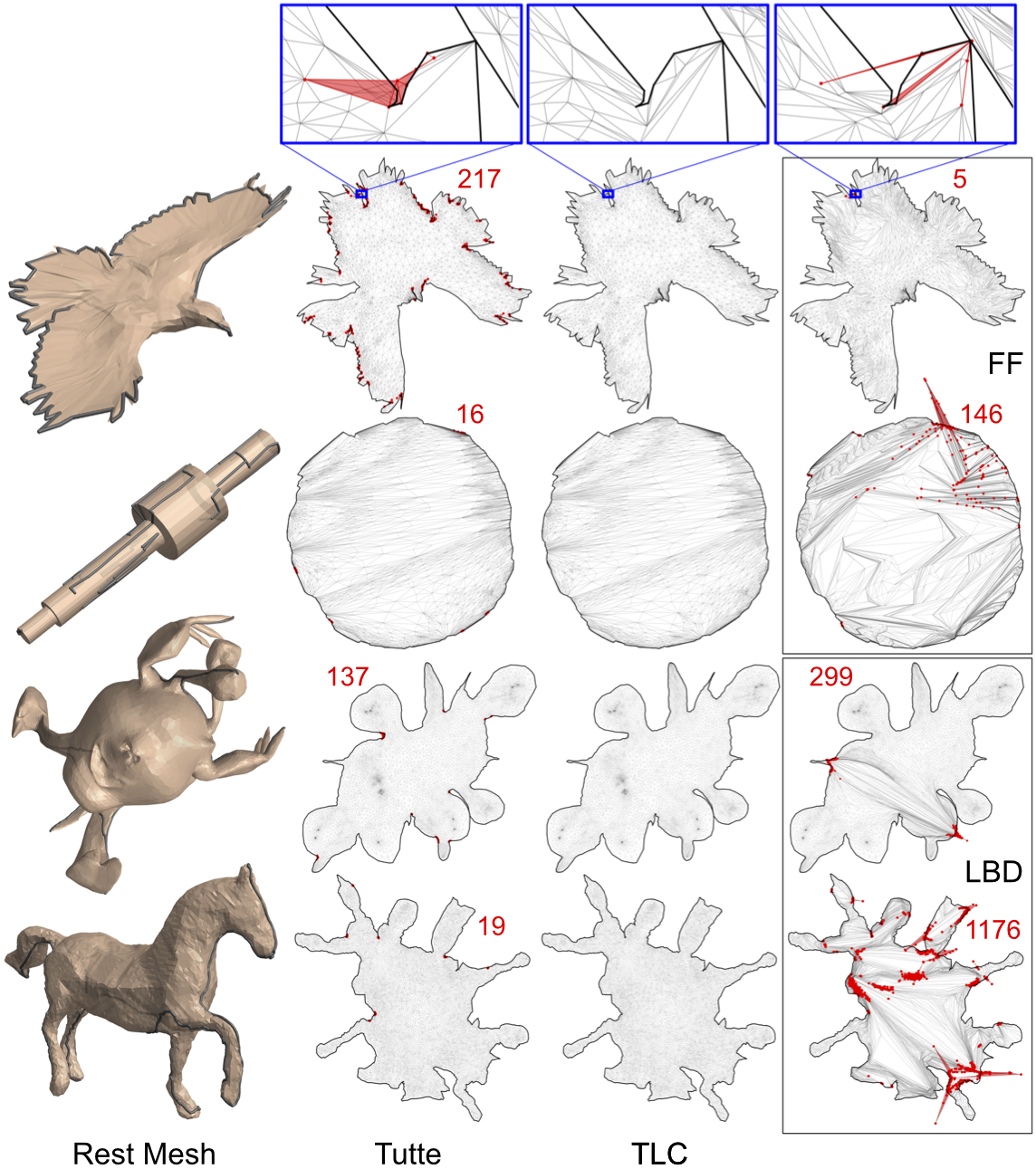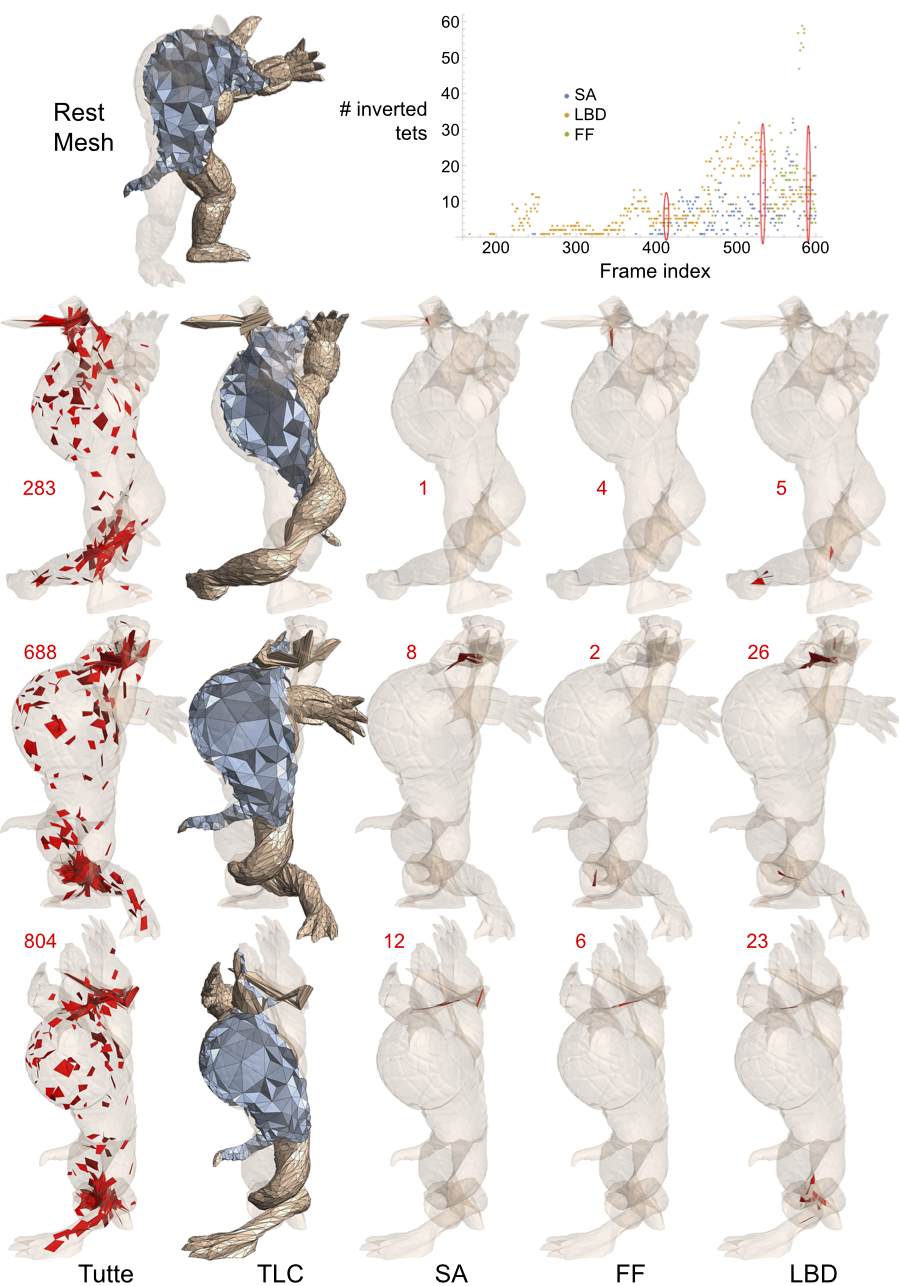
Abstract
Mapping a source mesh into a target domain while preserving local injectivity is an important but highly non-trivial task. Existing methods either require an already-injective starting configuration, which is often not available, or rely on sophisticated solving schemes. We propose a novel energy form, called Total Lifted Content (TLC), that is equipped with theoretical properties desirable for injectivity optimization. By lifting the simplices of the mesh into a higher dimension and measuring their contents (2D area or 3D volume) there, TLC is smooth over the entire embedding space and its global minima are always injective. The energy is simple to minimize using standard gradient-based solvers. Our method achieved 100% success rate on an extensive benchmark of embedding problems for triangular and tetrahedral meshes, on which existing methods only have varied success.
Video
Dataset
We present the large benchmark dataset of 2D/3D meshes used to compare with previous methods. The dataset includes 10743 triangular mesh examples and 904 tetrahedral mesh examples. The dataset is divided into 3 categories, 2D parameterization, 3D parameterization and 3D deformation.
2D Parameterization

3D Parameterization

3D Deformation

Dataset Organization
Each triangular mesh example contains
input.obj: rest mesh and initial mesh (as uv coordinates)handles.txt: list of indices of the fixed verticesresult.obj: result of our method
Each tetrahedral mesh example contains
rest.vtk: rest meshinit.vtk: initial meshhandles.txt: list of indices of the fixed verticesresult.vtk: result of our method
Here is an introduction to VTK format.